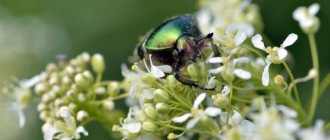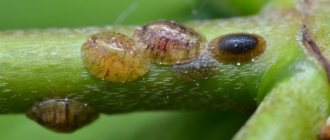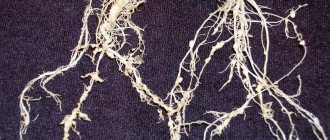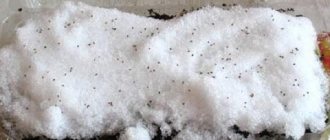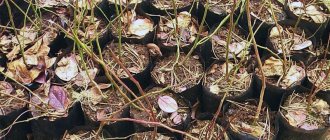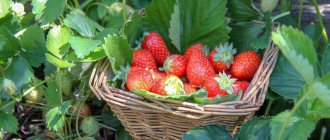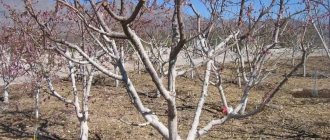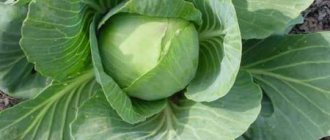Kivsyaki – terrestrial invertebrates living in many places around the world. There are also separate subspecies that have differences in the volume and shades of the body. Their length often reaches thirty centimeters, but in nature there are also smaller individuals.
Most often they (for example, Crimean kisyaki ) are observed in the forest, in a place where there are a lot of mushrooms, berries, branches, flowers, fallen leaves and the like. They can be seen everywhere except in places with extreme cold, such as Antarctica. Gray diplopods are typical for forests and south-latitude oak forests. The nods in the photo look very menacing, but some people even own these creatures and call them their favorites.
Kinds
Giant nodule is one of the most interesting subspecies. The number of their legs reaches seven hundred. They look like a huge worm. Typical habitat Africa is a place where many varieties of this subspecies exist.
The diplopod's head contains small antennae, segments, and olfactory and tactile organs. The centipede itself is a single organism, protected by strong “armor”, which is quite hard to the touch (this in turn helps the insect to avoid damage). Shades – yellowish, brownish.
In nature, there are still individuals with very dark “armor” and even with an interesting “pattern” on it. African nodule has reddish, yellowish and bluish shades. This species is the largest, native to East Africa. Females are slightly smaller than males. Over the course of a year, their length increases by 0.5 decimeters. Calm, non-aggressive.
Centipedes also have other colors of “armor”, for example, olive nodule . His body shimmers with dark (a combination of green and gray) shades. The segments are clearly demarcated. Lives in southern Africa. The eggs are laid in a dung heap. In the wild they live up to 7 years, in captivity this number can increase several times. The individual is less timid than the others, and therefore emits odorous liquid less often.
Rainbow nod has an interesting name for a reason. It is characterized by grayish and black shades of the shell; there is a red line on the body. The length of the insect is up to twelve centimeters. This species often lives in Thailand and Vietnam. It feeds on fallen leaves and lives in them. When hungry it bites.
Keeping nodule at home
In addition to its very original and extravagant appearance, such a native of the wild as this arthropod has another very positive feature in its arsenal, it is the ease of keeping such a pet. Many may think that since he has protective glands, he can shoot back with not entirely aromatic substances without any need, but this is not so, or rather, not entirely true.
This rather calm and phlegmatic pet by nature has a friendly disposition; therefore, if you do not cause any harm to it, that is, do not try to squeeze it in your hand, sharply grab it or turn such a centipede in different directions, then it, of course, will not begin to attack you with your poison. Poison venom is not dangerous to human life, the only thing is that in people with a history of allergies, a hypersensitivity reaction may occur if the substance comes into contact with the skin. However, after contact with arthropods, it is still better to wash your hands thoroughly.
If your pet feels that you are his friend and do not pose any threat to his life, then after a while he will be able to feel calm with you under the same roof and even go into your arms.
A horizontal terrarium with a size approximately twice the maximum length of the noose's body is ideal as his personal home. Since this wonderful arthropod really likes to bury its small body in the ground, the substrate in its house is simply necessary, and you can pour a fairly wide layer into it; it is desirable that the soil is always moist.
In order for your new friend to live a long and happy life next to you, be sure to add lime to the substrate - this is a natural strengthener for the nodule shell, if you do not do this, then the life of your exotic may end very sadly and painfully for him - there is a possibility that he will fall apart alive into small pieces and this is not an exaggeration at all.
If you start planting beautiful plants in a terrarium, then remember that your plant is not a big fan of bright light, which these green interior elements need so much. We can say that his favorite pastime is to sit immobilized in some secluded dark corner of his house and only occasionally show flashes of motor activity, despite the fact that the number of his legs allows him to run long distances.
It is not at all difficult to feed such an exotic friend; as main dishes, you can offer him vegetables, fruits, mushrooms and berries, from time to time you can bring leaves from the garden, including fallen leaves and even, no matter how strange it may seem, rotten wood. We must not forget about periodic feeding, especially when it comes to calcium.
Lifestyle
surrounding the centipede includes a considerable number of diverse living organisms. It spends its entire life on the forest floor; it digs out passages in the ground. The fact that the noon has many legs is not always able to help it avoid the threat of a dangerous predator, because it is very slow.
By her character you can understand that she is a phlegmatic person. And this is a consequence of the fact that she has no dangerous opponents in nature. The only creatures that bother them are parasitic mites. To protect and scare away predators, they emit a foul odor and wrap themselves in a tight ball. His favorite pastime is to bury himself in the ground and slowly become numb.
The smell emitted by centipedes helps not only themselves, but also some other animals. As evidence, we can say about the lemur, which, when danger comes, intimidates the nook and rubs its body with its odorous secretions. This is how he manages to escape from his opponents.
Many are of the opinion that how nasty the odor of the kiwi is directly depends on its color. For example, white diplopods smell really very unpleasant. However, this does not stop people who are passionate about exotics, and they are often interested in breeding such squids at home.
However, hobbyists often keep African snakes, which are similar to ordinary snakes, except that they have numerous legs. The box or something similar where they will live should be made of plastic or glass. They are easy to care for. Keeping kissyaks has a number of disadvantages.
The main one is excessive timidity, as a result of which centipedes curl up in a tight ring and emit a nasty smell. It is recommended to use gloves before handling centipedes. After all, discharge easily stains clothes. They are very peaceful, calm, but unsociable. The price for one kivsyak reaches about six hundred rubles.
Destruction with baits
The most popular method among people to get rid of centipedes is to feed them with pieces of root vegetables loaded with insecticides. The bait is scattered throughout the area. This simple method requires regular troubles: moistening the bait, renewing it, protecting it from rain, and collecting bait.
Therefore, they complicate it:
- At the bottom of the funnels, trapping containers (glass jars, cans with vegetables) are buried;
- the bait is placed under an opaque heat-light-moisture insulator (board, plywood).
Arthropods readily use such shelters, from which they are systematically removed.
Disadvantages: baits are good when a limited number of individuals have locally settled in a small space. If several colonies have become neighbors, individual selection is unlikely to solve the problem. At the same time, it is necessary to meticulously clear all traps of individuals attracted from all over the area, otherwise the destruction of the nodule will imperceptibly turn into its breeding.
Nutrition
Kivsyaks are often called gluttons, because in one month they consume a bucket of food. Their diet consists of mushrooms, rotten shoots, bark, and so on. However, when caring for a centipede in an apartment, you don’t have to worry about its diet, because it is omnivorous. Eats both meat products and dairy products (cottage cheese). Some people feed their pets fruits, vegetables and any other plant foods.
A notable fact about diplopods is that they often eat chalk. This is due to the content of calcium and vitamins in the composition (they strengthen the shell). Chalk can be replaced with egg shells. You should not give too much food, otherwise mold will begin to form on the leftover food. Therefore, they should be removed immediately.
A favorite place for breeding is considered to be a manure heap, which is why many summer residents often find these invertebrates in the ground. If you do not take any measures to combat them, they will soon begin to gnaw on the roots, as a result of which the plants will simply stop growing normally due to lack of nutrients. It is not always possible to see such small pests, because their length is a maximum of one and a half centimeters.
As mentioned earlier, the color of the shell of centipedes depends on their variety. They are black, white, olive, yellow, brown. Their bodies have a large number of warts and sparse setae; each segment contains two pairs of legs.
Quite often, nodules end up on tubers along with manure. That is why, before buying any fertilizer, it is recommended to carefully inspect it and check for the presence of these small pests and their larvae.
To prevent unexpected “guests” from appearing on your site, the gardener should periodically clean the soil and greenhouse (remove plant debris), and also treat the soil annually using chemical and thermal methods.
Pest control methods
Because of the chitinous “body armor”, it is quite difficult to fight the pest that has chosen the site.
Chemicals
In this case, they do not always bring the same effectiveness as in the fight against other pests. The reason for this is the same chitinous shell that covers the body of the invertebrate. However, chemicals can be effective against larvae that do not have a chitinous coating.
Spraying the stems and treating the seed rarely produces results. The fact is that the animal only gnaws the roots of plants.
Aktofit
The active ingredient is aversectin C. The product is used for open and closed ground, and allows you to obtain an environmentally friendly harvest. Avermectin is a neurotoxic poison produced by the soil fungus Streptornyces avermitilis. It enters the pest's body through intestinal or contact routes.
Decis
The active ingredient is deltamethrin. The drug affects the nervous system of the pest through intestinal and contact exposure. Decis acts extremely quickly - from a few seconds to several minutes.
Karate
The active ingredient is lambda-cyhalothrin. A broad-spectrum drug is used for treating plants, disinfecting areas and storage facilities. Has a pronounced knockdown effect. Can be used in tank mixtures, fungicides, insecticides, but it is worth considering the timing of use, and also make sure the compatibility of the drugs.
The application rate depends on the crop being treated. The period of protective action is from 3 to 7 days.
Zemlin
The active ingredient is diazinon. The drug is developed against soil-dwelling pests. It is mixed with sand or sawdust and placed in the ground. When planting potatoes, add 1 teaspoon of the product to each hole. Another method of application is to disperse the preparation over the soil and immediately loosen it.
Expert opinion
Mityuk Stefania Bogdanovna
As owners of summer cottages write on the Internet, the same remedies are effective against mole crickets and wireworms. Some users note that a Fas-double designed for ants will help get rid of unwanted guests.
Folk remedies
Gardeners suggest using vegetable baits. Pieces of vegetables - potatoes, carrots - are treated with insecticides and scattered around the area. The bait is changed regularly. It is better to leave pieces of vegetables under boards or plywood. This method has a drawback - it is only effective for a small population of nooses.
It has been observed that centipedes love damp places. Therefore, in order to collect them in one place, “sheds” are made of boards, under which the ground is always wet. The invertebrate emerges from the ground onto the boards in the evening, and all that remains is to collect the animals and destroy them.
How do you fight the noobs?
ChemicalPopular
Kivsyakov are lured into “compost pits”. Small trenches are dug in the garden and organic waste is left in it, which attracts centipedes.
Before collecting the pest, it is better to wear protective clothing and disposable gloves. If a foul-smelling liquid gets on clothes, it is very difficult to get rid of it, especially if we are talking about albinos.
If there are a lot of pests on the site, it is recommended to water the soil around the potato beds with a solution of calcium chloride or salt before hilling.
Reproduction and lifespan
In nature, the female usually lays up to 70 eggs in the ground (right where she lives). The larvae of this species practically do not differ in appearance from their parents, except that they have smaller legs. When cold weather sets in, they and adults prefer to burrow deep into the soil with optimal moisture. And this is how they survive the winter.
To distinguish centipedes by gender, it should be remembered that males have homopods (similar to additional limbs), which are located inside the head segment (its inner part). This information is especially important for those who intend to raise invertebrates at home.
In order for the female to accurately lay eggs, it is necessary to provide all the necessary conditions for this - a variety of food, optimal humidity, proper care. If you follow all the steps correctly, the centipede will live for at least ten years.
Preventing the appearance of nodule on strawberries
Quite often, centipedes end up in strawberry plantations with manure. Therefore, it is necessary to carefully control its composition. A set of agrotechnical measures is also recommended:
- deep digging of humus in the fall and cultivation in the spring. This measure allows you to destroy a significant number of pests;
- depending on the condition of the soil, carry out liming;
- planting light mustard and rapeseed. These plants have a beneficial effect on the composition of the soil and repel centipedes;
- timely collection of weeds and plant residues.
Benefits and harms
Noiseweeds cause obvious harm when they live on gardeners’ plots. They damage the roots, thereby preventing the seedlings from developing normally. Sometimes small pests get into flower pots. To get rid of them, you need to put the pot in water for a couple of hours, wait until all the centipedes come out, and collect.
You can’t grow a compost heap in pots, it’s useless. For feeding, it is better to use complex fertilizer. Humus is often used against garden weeds. It is also worth mentioning the benefits that kiwis in the country can bring. They are able to “recycle” compost waste and turn it into nutritious soil.
If there is a strong disgust from such a neighborhood, a person can use some chemicals, such as “Karate”, “Aktofit” and others. But for a more effective result, it is best to add chloride salts.
Signs of plant damage and damage
Signs of damage are not specific. Kivsyaki gnaw holes of varying depths in the berries. But often inside the hole you can find a larva of a noose or even several larvae intertwined in a ball. Damaged berries acquire an unpleasant odor and cannot be used for food. In a cold and wet spring, nodule moths can damage the root system and underground part of the stems of many crops, gnawing out small cavities in them. The affected areas turn brown or black. Plant development slows down, and if severely damaged, they dry out and die. In cases where woodlice and woodlice are present in the soil together with woodlice, the damage to cultivated plants is most serious.
Kivsyak in strawberries
How to get rid of nodule?
The appearance of these centipedes in large numbers will not bring any benefit in the form of processing rotting organic matter for the garden. Also, together with worms, they form fertile humus, but again only in small groups.
The massive proliferation of these pests means that gnawed beets, raspberry and tomato bushes, potatoes and other agricultural crops will soon appear on the site. In order to avoid such encounters and keep your harvest intact, you need to understand how to get rid of nodule.
This is interesting! When diplopods begin to move, the forelimbs are activated first, and then everything else. You can notice a kind of wave.
Large individuals are usually not found in the areas. In most cases, they live in Africa, America or Asia (tropical latitudes). In Russia, you can rarely see giant centipedes, but medium ones are very common.
Over the course of a year, these creatures are able to process a lot of plant residues that have already begun to rot, turning them into nutritious soil (for this you need to dig a compost pit).
The most common type of centipedes in the middle zone is gray-steel (reaches more than thirty millimeters in length). In second place is the sandy one (the shell is black with two longitudinal stripes of orange color).
Mating of two individuals occurs only at temperatures above +25, and there must also be high humidity. Nest building materials are excrement and pieces of soil. The small larvae look like smaller versions of the adults, but with a difference in the number of legs. The growth process is accompanied by periodic molting, which contributes to the appearance of additional pairs of legs.
Why are nooks dangerous?
In most cases, these centipedes do not harm gardens and vegetable gardens. However, mass reproduction causes food shortages. Because of this, grasshoppers begin to eat fresh roots and shoots. In addition, centipedes may begin to eat fresh shoots due to lack of moisture, i.e., when the soil is excessively dry.
They can also eat ripe berries of some plants. They can be found especially often on strawberries. Signs of damage are holes in the berries, sometimes larvae appear in them. Once damaged, the berries become unsuitable for eating.
It is worth noting that due to cowardice, coloring and nocturnal lifestyle, it is extremely difficult to see the pest during the day.
Are nostrils dangerous for humans?
Noiseweeds are considered safe for humans; they do not bite or attack. In case of danger, the nooses secrete an odorous secretion; in some species of invertebrates it can be poisonous and cause an allergic reaction. In addition, if the secretion accidentally gets on the mucous membrane, it will cause irritation.
But all this causes severe discomfort; there is no serious danger from meeting a nook.
Is there any benefit to nooks?
In small numbers, nods are useful bedfellows. In nature, they help speed up the process of decomposition of organic residues and play a large role in enriching the soil with oxygen. Therefore, it is generally accepted that such a centipede does more good than harm. Accordingly, its destruction in the garden plot is by no means mandatory. However, it is important to monitor the number of animals and soil moisture.
Is it worth fighting against the nod?
By nature, kiwis are vegetarians, but if a person keeps them at home, then you can feed them anything, without going to extremes, of course. Invertebrates climb from the site into the house if there is high humidity outside, which provokes accelerated reproduction of individuals. Houses are usually settled in the kitchen or bathroom, since water is present there. They scare you with their appearance when they crawl on the ceiling.
They are active at night, because during the day the sun negatively affects the shells, drying them out. They do not carry infections or diseases, and do not bite people or domestic animals. They are very shy, and in case of any danger they turn into a dense circle and emit foul odors to protect the abdomen. There is no danger to people, except that they may stain their clothes or hands.
Few people can be happy about the appearance of centipedes in the house, especially impressionable owners. In such cases, many wonder how to eliminate them. Insecticides are not very effective against pests, so the best solution is to use special traps. They should be laid out in the evening. To attract nooks, any damp rag or pieces of potato are placed there. For greater effect, you can use “Pochin” (food bait-insecticide).
Sometimes pests settle in pots with indoor plants, and thereby greatly upset the owners. Noises appear there because organic matter is necessarily present in any pot. This can happen if you use untreated soil from the site.
Important! Before adding garden soil to a pot for indoor plants, it is recommended to pour boiling water over it.
If you regularly pour tea leaves into pots, this will only speed up the process of pest reproduction. This is also facilitated by fallen buds and leaves that were not removed on time. After the moths eat all the rotten stuff, they switch to flowers.
If the plant is small in size, then it should be carefully dug up and the pot with soil should be placed in water for a while. If it is impossible to use this method, it is better to use one of the popular insecticides - “Karate Zeon” or “Aktofit”.
Centipedes on the window
Nourishing plants cause big trouble to lovers of indoor plants. There is a small amount of organic matter in the pot, so the millipedes that get there begin to eat the roots of the flower. How do diplopods get onto houseplants? A common option is with soil taken from a summer cottage. If the soil was not treated before planting, the pest will move from the garden to the apartment.
Advice. Treat the soil in at least the simplest way - pour boiling water on it.
Favorable conditions for the development of centipedes are created by pouring tea leaves into a pot. Untimely removal of fallen leaves and buds provokes the proliferation of the pest. An overgrown colony of centipedes eats all the dead organic matter and takes over the flowers themselves. The safest way to get rid of them is to place the pot in a bowl of water. The flies will float to the surface, all that remains is to collect and destroy them. If this method cannot be carried out due to the large size of the plant, then insecticides are used - “Aktofit”, “Karate Zeon”.
General agricultural practices
Organizational and preventive measures taken in a timely manner bear fruit in the struggle for the harvest. Among them:
- late autumn plowing and early spring cultivation, which contribute to the freezing of centipedes;
- growing green manure in combination with crop rotation;
- liming of lands;
- mandatory rules should be: the use of rotted manure, composts and humuses; control of their biological composition and final preparation.
Chemical treatment
Treating the soil with chemicals does not give a complete chance of clearing it of seven hundred centipedes
(the nod has so many legs): the chitinous shell is too strong. Nevertheless, some insects, mainly larvae, die under the influence of drugs in a period of 5 hours to 5 days. Properly selected herbicides will help get rid of pests.
The compositions “Aktofit”, “Karate”, and nematicides are used. Local treatment of planting holes reduces the negative effect of the use of chemically unsafe compounds. A more environmentally friendly and effective remedy is treatment with solutions of chloride salts. Substances are added to the soil in the evening, when insects emerge from their shelters.
Chemical effects on stems and seeds in the fight against grasshopper will not give significant results. The insect does not so much eat as it gnaws on the weak, rotten roots of the plant.
The chemical treatment schemes for plants and land adopted in Russia do not provide precise recommendations for combating this creature. However, regular chemical treatments can reduce centipede numbers.

